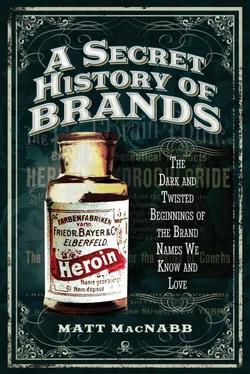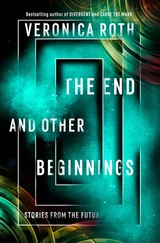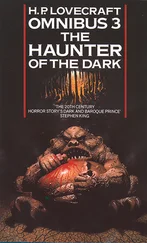The foundation receives its income primarily from the W.K. Kellogg Foundation Trust, which was set up by Mr Kellogg. In addition to its diversified portfolio, the trust continues to own substantial equity in the Kellogg Company. While the company and the foundation have enjoyed a long-standing relationship, the foundation is governed by its own independent board of trustees. The foundation receives its income primarily from the trust’s investments.
Over the years, the Kellogg Foundation’s programming has continued to evolve, striving to remain innovative and responsive to the ever-changing needs of society. Today, the organisation ranks among the world’s largest private foundations, awarding grants in the United States, Mexico, Haiti, northeastern Brazil and southern Africa.
Chapter Eight
Winchester: Guns to Ghosts
The twisted tale of the Winchester Mystery House is one of California’s most enduring legends. A spooky and supernatural tale follows the legacy of the late Sarah Winchester and the seemingly bizarre home that the wealthy gun heiress built to appease the angry spirits of the dead. It is said that the spirits haunted her due to her departed husband’s work in manufacturing firearms during the Civil War era and beyond. If you believe the inflated campfire tales, the grieving widow turned to a medium in the height of her misery and regularly held séances to communicate with the ‘other side’, all the while building a home that featured staircases to nowhere and closed-off hallways. The truth behind the legend may be infinitely less spectacular, but equally as tragic.
The Winchester Rifle
This chapter focuses on the legacy of the tortured widow, Sarah Winchester, but in order to understand her pain and paranoia it is important to understand the legacy of death and pain that lead to the Winchester curse. There are iconic images of the Wild West, the cowboy with his trademark hat and, of course, his Winchester rifle. The imagery of legendary characters, like Buffalo Bill Cody and Annie Oakley, can be seen brandishing the rifle in pictures of the era. In fact, the only picture known to exist of the infamous outlaw Billy the Kid shows him posing proudly with his Winchester model 1873 rifle. The iconic weapon also became a staple in Hollywood westerns, with John Wayne himself using them in some of his more famous films, like True Grit and Stagecoach . Don’t mistake the Winchester firearms for harmless movie props, the guns remain a piece of history and culture for a reason, they were as deadly a weapon as the world had seen to that point. The gun emerged at just the right time to change history, and would be dubbed: ‘The gun that won the west’.
The expansion of the American settlers westward was a major catalyst in United States history. The establishing of cities and towns all across the country and the eventual creation of the railroad to unite the east and west serve as turning points in history. The 1850s were a treacherous time to travel across the country. Pioneers left the comforts of home behind to make their way across America and build a new life in a gritty and unfamiliar area. This is an era before automobiles and before the mid-western territories were settled, so dangers abounded. The terrain and elements were harsh enough, but there were also aggressions with the Native Americans, who were none too happy to find people trudging across the country into their territories and claiming land as their own. The only real method of defence that a pioneer and his family would have on a wagon train is a single shot rifle. It was a step up from the musket, but not by much. It took an experienced user approximately ten seconds to reload the rifle after each shot, leaving them vulnerable during that time. It has been suggested that without the innovations of Winchester’s firearms, the west may never have been settled at all.
The man who would come to revolutionise firearms and have his name emblazoned in history and forever tied with armaments, was as far from being a gun maker as it is possible to imagine. Oliver Fisher Winchester was born on 30 November 1810 to Samuel and Hannah Winchester. When Oliver was a boy he worked on a farm and attended school during the winter when the farm work was on hold. Oliver Winchester began his life in the carpentry trade, working as an apprentice throughout his teenage years, and soon moved to Baltimore to oversee the production of various buildings and homes. Despite starting a business being a risky venture in the economic climate of 1837, Winchester made the bold move of opening his own men’s clothing store. Winchester became a producer of men’s shirts and found a moderate level of success. In 1847, he sold his store in Baltimore and moved to New Haven, Connecticut, where he would stay for the remainder of his days. Winchester had a unique idea for improving upon the method of shirt making by inventing a curved seam, which would remedy the pull on the neckband, causing wear on the garments. His patent, number 5,421, was granted on 1 February 1848.
Winchester was anxious to go to work, but he needed a business partner to get him off the ground. He joined forces with John M. Davies to form the Winchester & Davies factory. The business would use Winchester’s patented seam to produce quality men’s shirts for many years. The success of the company would make Winchester a very comfortable man and by 1855 his company was grossing upwards of six hundred thousand dollars a year. Oliver was looking for other ventures to invest in so he could establish and expand his wealth. He soon found an emerging marketplace in which to invest.
On 21 August 1849 prolific inventor Walter Hunt patented a brand new invention, the repeating firearm. Hunt held patents for many items we now take for granted, such as the fountain pen, sewing machine and the safety pin. His US patent 6,663 was granted for a ‘Combined piston breech and firing cock repeating gun’ and US patent 5,701 for his ‘Rocket Ball’ ammunition. He took his patent and developed what he called the ‘Volition Repeater’ rifle. This revolutionary measure would pave the way for the most effective firearms of the era, but it wasn’t Hunt’s gun that would do the job. In fact, it suffered from numerous defects, which kept it from ever making its way to mass production. The idea was improved upon by Lewis Jennings and produced by Robbins and Lawrence. The new design produced by Jennings was awkward to hold and fire, not to mention the weak strength of the ammunition. The gun was a failure, only 1,000 units were produced before it was pulled from the market. It was at the Robbins and Lawrence factory that two gunsmiths, Horace Smith and Daniel Wesson, began developing improvements on the Jennings design.
The duo were eventually able to patent their own magazine firearm on 14 February 1854. The repeating rifle that Smith and Wesson had developed was a vast improvement on the previous Jennings model. This was the first time we saw the lever design able to swing forward, allowing for a faster repetition of firing. The image of a cowboy cocking the Winchester rifle and firing in rapid succession would be made iconic by Hollywood and in television shows like the opening to the 1958 western classic series The Rifleman . Guns like the Smith and Wesson rifle allowed the user to load up to thirty bullets into the magazine, which was conveniently located under the barrel of the gun. Adverts for the gun claimed that it could be loaded in less than a minute and that the ammunition was waterproof. The entire design was far more streamlined. Smith and Wesson formed their first joint venture, Smith & Wesson Company, around their new design and went forward with production. They changed the name to the Volcanic Repeating Arms Company in 1855 to mirror the name that they gave their rifle, the Volcanic.
Читать дальше












